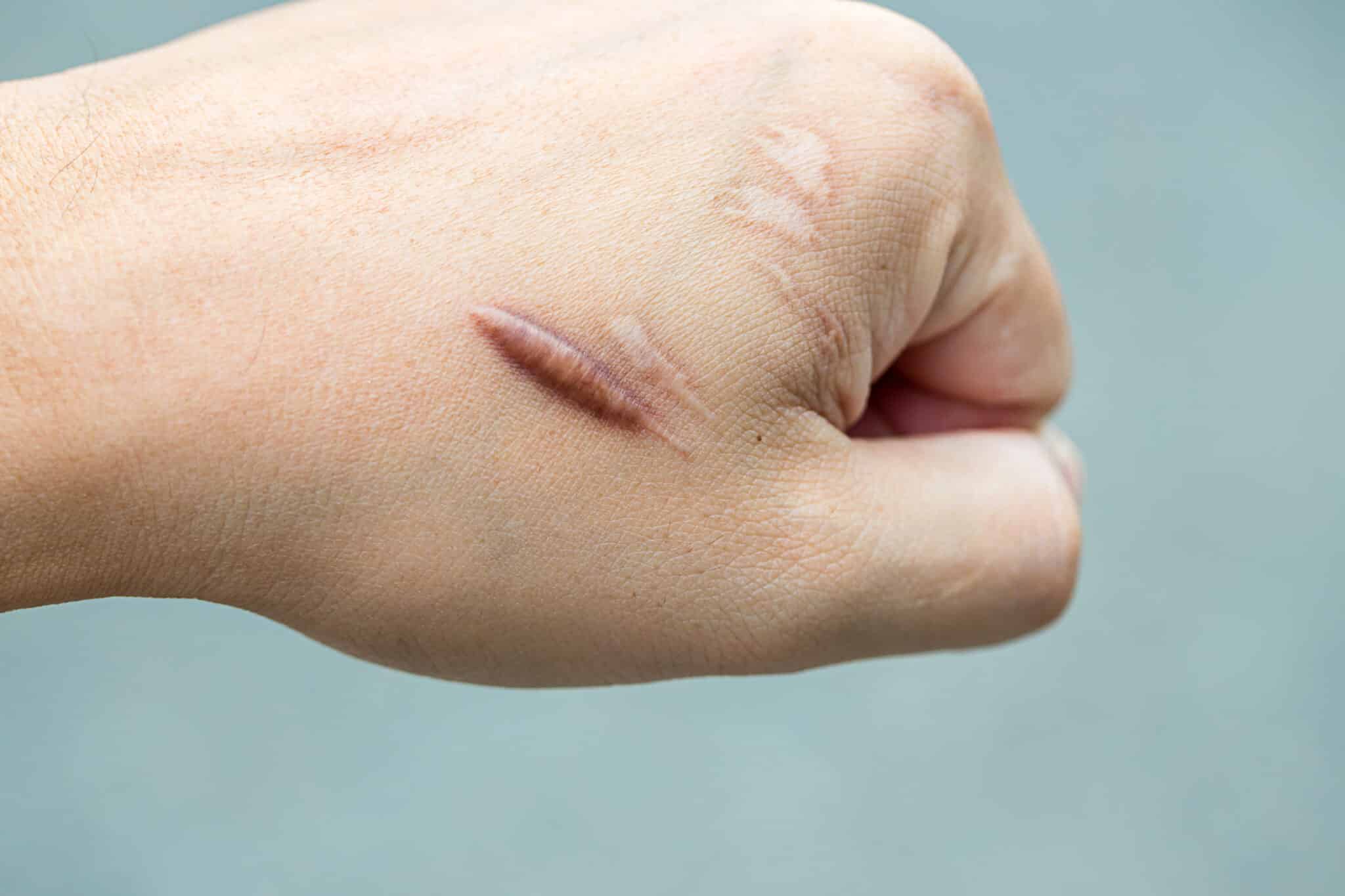Scars are common following injuries, surgeries, or even certain skin conditions. For many people, scars are not just a physical reminder of past traumas but can also impact their self-esteem and confidence. Among the various types of scars, keloid and hypertrophic scars are particularly discomforting because of their raised appearance and potential to draw unwanted attention.
Understanding the differences between these two types of scars and knowing the appropriate treatments can help you manage your skin concerns effectively.
Keloids are a type of scar that forms when the body's natural healing process goes into overdrive. Instead of stopping the production of collagen—the protein responsible for healing the wound—once the wound is closed, the body continues to produce collagen excessively. This leads to a raised, thickened scar tissue area extending beyond the original wound's boundaries.
Several factors can contribute to the development of keloids, including genetics, skin tension, and injury severity. People with a family history of keloids are more predisposed to developing them. Having wounds located over joints or areas with high skin tension could also result in keloid formation.
Like keloids, hypertrophic scars result from an overproduction of collagen during wound healing. However, unlike keloids, hypertrophic scars do not extend beyond the boundaries of the original wound. Instead, they remain confined to the area of the initial injury, resulting in a raised, red scar that may gradually fade over time.
Hypertrophic scars develop within the first few weeks following an injury and may continue thickening before stabilising. They often occur in areas with high skin tension, such as the chest, shoulders, and upper back.
How are keloid and hypertrophic scars different
While both keloid and hypertrophic scars exhibit raised, thickened tissue, several distinguishing characteristics can help differentiate between them:
- Size and shape: Keloids tend to grow beyond the borders of the injury site and do not regress, while hypertrophic scars remain within the confines of the initial injury and may regress over time.
- Texture: Keloids have a smooth, shiny appearance and may feel rubbery or firm. In contrast, hypertrophic scars often have a rougher texture and may feel softer than keloids.
- Colour: Keloids may appear darker than the surrounding skin, especially in persons with darker skin tones. Hypertrophic scars are usually red or pink in colour during the early stages but may fade over time.
- Collagen pattern: Under a microscope, you can see that keloids have no particular pattern of collagen whereas hypertrophic scars have collagen in a wavy pattern.
- Collagen fibres: Collagen fibres in hypertrophic scars are finer compared to those in keloids.
- Collagen composition: Compared to keloids, hypertrophic scars have a greater number of Type III collagen than Type I collagen.
- Symptoms: Keloids are often accompanied by itching, pain, and tenderness, whereas hypertrophic scars may be less symptomatic.
- Genetic predisposition: Keloid formation has a higher incidence among people with darker skin complexion than those with fair complexion. Hypertrophic scars, however, do not appear to have a genetic predisposition.
- Incidence rate: Hypertrophic scars form more often than keloids.
- Recurrence rate: After excision, hypertrophic scars are less likely to appear again, compared to keloids.
- Location: Keloids usually form on the earlobe, face, chest and back. On the other hand, hypertrophic scars tend to form on extensor surfaces, meaning skin surfaces on the outside of a joint, such as the front of the knee and the back of the elbow.
Treatments for keloid & hypertrophic scars
Managing keloid and hypertrophic scars can be challenging, but 1Aesthetics provides several scar removal treatment options to improve their appearance:
- Steroid injections: Corticosteroid injections directly into the scar tissue can help flatten and soften both keloid and hypertrophic scars. Multiple injections may be required over several weeks to achieve optimal results.
- Surgical excision: Surgical removal of keloid or hypertrophic scars may be considered for people who do not respond to other treatment modalities. Surgical excision involves carefully cutting out the scar tissue, aiming to achieve a smoother, flatter skin surface.
- Laser therapy: Laser treatments, such as CO2 laser or vascular laser therapy, can help reduce the size and thickness of keloid and hypertrophic scars by targeting abnormal tissue, blood vessels and stimulating collagen remodelling.
- Pressure therapy: Applying pressure to the scar tissue using silicone gel sheets or compression garments may help flatten and soften hypertrophic scars over time. This scar removal method is especially effective when used in conjunction with other modalities.
- Topical treatments: Prescription-strength creams and gels containing silicone or corticosteroids may help reduce the size and redness of hypertrophic scars. These scar removal treatments are often more effective when applied during the early stages of scar formation.
Scar removal in Singapore
Keloid and hypertrophic scars pose significant challenges for people seeking to improve their skin's appearance. Fortunately, they can take proactive steps towards achieving smoother skin with professional treatments.
For those who want professional scar removal treatments in Singapore, 1Aesthetics offers a range of therapies to address keloid and hypertrophic scars effectively. Each scar removal treatment is customised to address the unique needs of the individual, ensuring optimal results and patient satisfaction.
To learn more about scar removal treatments, schedule a consultation today.
References
- Carswell L, Borger J. (2023). Hypertrophic Scarring Keloids. StatPearls Publishing; https://www.ncbi.nlm.nih.gov/books/NBK537058/
